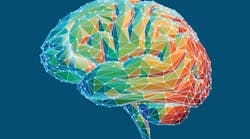Lessons Learned from Applying AI: Johnson Controls, Kaman, Stanley and More
Readers of IndustryWeek know that artificial intelligence (AI)—and machine learning in particular—is a transformational technology. Every aspect of manufacturing is affected, from workforce training and quality control to supply chain management and new product development. But what can we learn from those who have successfully applied AI? That was the central question at a September 26 workshop I organized, “Applications of AI in Government and Industry,” held at the National Academy of Sciences in Washington, D.C., and featuring 19 speakers from government, manufacturing, and academia.
Data Is King
Every organization represented at the workshop is leveraging large data sets that meet minimum quality standards. Xometry, a contract manufacturer, employs AI to price and source machined parts. Its pricing model was trained on data from more than 2 million produced parts catalogued on 657 features. Fero, a Brooklyn-based consulting firm, takes continuous, real-time data from more than 1,200 sensors at a typical integrated steel mill to reduce scrap rates. Johnson Controls leverages large amounts of high-quality data on equipment and buildings to optimize its energy management services.
And AI is not being applied haphazardly. Every application featured at the workshop is a task central to the mission of the organization sponsoring it. The Veterans Administration is using AI to improve health outcomes (e.g., identifying those at risk of impending kidney failure). NASA is applying AI to minimize the mid-air collisions of supersonic aircraft. Energy-intensive manufacturers are using AI to reduce energy costs. Railroads are minimizing unplanned maintenance for locomotives.
A skilled workforce is also critical. For the federal government, attracting and retaining talent is a particular challenge in a high-tech field like AI. According to a recent survey of MAPI members, skilled labor is also a top priority for manufacturers seeking to apply AI.
In its quest to adopt Industry 4.0, Stanley Black & Decker is investing heavily in upskilling and retraining workers at the same time AI applications are being developed. Ernest Begin (Kaman Corporation) noted that the scarcity of skilled workers is a major impediment to adoption of machine learning. And Young Lee (Johnson Controls) listed competency in AI algorithms as central to his company’s efforts.
Differences in Emphasis
Aside from these common themes, there were some differences in emphasis between government and industry panelists. Government speakers emphasized explainability and trust, which are central to ensure public accountability. The Defense Advanced Research Projects Agency (DARPA), for example, is sponsoring academic research to make AI more understandable to operators and analysts—which is critical in defense-related activities.
Industry speakers, on the other hand, emphasized the importance of domain knowledge (i.e., subject matter expertise) to complement AI. Jake Bartolone of industrial analytics firm Uptake commented that domain expertise is needed to show that not all anomalies recognized by AI are meaningful.
As it applies AI across dozens of industrial settings, Fero ensures interpretability by leveraging the domain expertise of factory personnel. And Johnson Controls’ successful application of AI has been predicated on substantial domain knowledge.
Speakers also emphasized the need for top-down executive commitment. Mark Johnson, director of the Center for Advanced Manufacturing at Clemson University, believes the biggest challenge to applying AI is trust—thinking that the status quo is working, thinking that established processes are working. Yet according to Stephen Ezell (Information Technology & Innovation Foundation), most executives in manufacturing have a poor general understanding of AI and what it offers. Fortunately, convincing workers of AI benefits is not as difficult as convincing management. At Stanley Black & Decker, production line workers embraced AI once they realized that it could make their jobs easier.
The Path Forward
To increase the breadth and depth of AI-enabled applications in the future, certain challenges must be met.
1. More research is needed to ensure explainability and trust. Cindy Goldberg (IBM) says researchers must build trust into AI systems as capacity and sophistication grows. According to John Reeder, a researcher with the U.S. Navy, explainable AI helps the user understand the circumstances under which AI fails or succeeds, the circumstances under which AI decisions or determinations can be trusted, and why AI errs when it errs.
2. To create a skilled workforce, government should reallocate education and training funds. The National Science Foundation (NSF) is investing in K-12 education to incentivize a broad and diverse group of students who are interested in AI. Stephen Ezell believes much more is needed; a massive expansion of AI talent is called for to address market demand.
3. Major advances in hardware are required. Current hardware cannot manage the growth of AI without more efficient computing power. And access to infrastructure and cloud computing resources will continue to be a high-priority need.
4. AI depends on continued growth in connectivity and ancillary technologies and associated policies (e.g., cybersecurity). According to Stephen Ezell, AI is just one of a suite of complementary technologies that comprise the next industrial revolution (Industry 4.0). Diana Furchtgott-Roth (Department of Transportation) mentioned the importance of unlicensed spectrum to create a hybrid communications infrastructure to address a wide range of transportation needs. Mark Johnson’s list of major challenges include ensuring privacy and security of data throughout a manufacturer’s organizational boundaries. Young Lee emphasized the need for an Internet of Things computing platform (i.e., digital vault), and testbeds (for the building and for HVAC) for AI applications.
5. Innovation will increasingly require collaboration between industry, the government, and academia. Many such efforts were mentioned at the workshop: Amazon is partnering with NSF to promote fairness in AI, the Department of Energy is sharing its AI expertise from national labs with federal and non-federal partners, and the National Institute of Standards and Technology (NIST) is working with manufacturers to set technical standards. Multiple speakers recommended creating collaborative centers for research/innovation between industry, government, and academia to promote innovation in pre-commercial technologies. And a few panelists emphasized the need for industry to partner with local schools, including community colleges, to ensure a pipeline of skilled workers.
Notable for its absence at the workshop was the potential negative impact of AI on jobs. On the contrary, speakers noted that AI applications are creating demand for new skills and emerging occupations.
Keith B. Belton is Director of the Manufacturing Policy Initiative at Indiana University in Bloomington, Indiana




